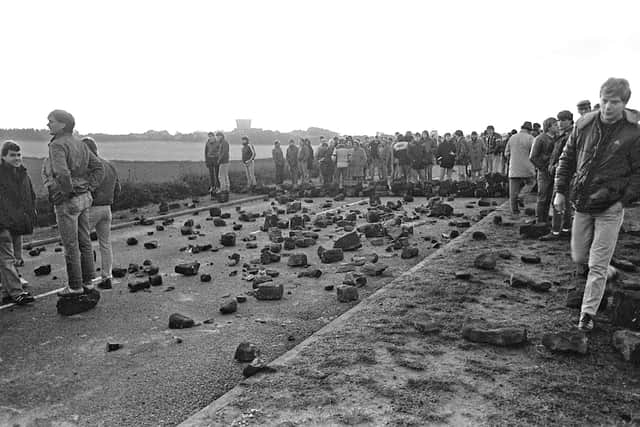MINERS’ STRIKE 40TH ANNIVERSARY: Unprecedented industrial dispute changed the face of Wakefield district and the country
and live on Freeview channel 276
The 1984-85 coal miners’ strike divided communities, changed the ways people across the country live and made an impact that still reverberates in 2024.
On March 5, 1984, Yorkshire miners walked out on strike after the National Coal Board announced the closure of Cortonwood Colliery, near Barnsley.
Advertisement
Hide AdAdvertisement
Hide AdUnions were told Cortonwood was just the first of a widespread closure programme which would shut 20 pits, with the loss of 20,000 jobs.


Within days, half of the country’s miners had walked out in protest at pit closures, and soon most of the UK’s 190,000 pit workers were embroiled in a daily routine of picketing outside collieries.
A series of features by the Express will look at what the strike still means 40 years after it started.
It will include accounts of striking miners, union officials and the women battling against pit closures, as well as testimony from miners who broke the strike and police at the pickets.
Advertisement
Hide AdAdvertisement
Hide AdThe National Coal Mining Museum (NCM) in Netherton is running a year long exhibition on the strike.


It will feature temporary exhibitions dedicated to specific aspects of the dispute.
NCM chief executive Lynn Dunning said: "The new exhibition focuses on the memories and experiences of those who lived there and tries to give a balanced view.
"Often we hear from miners on strike. But this covers men who didn't go on strike as well. And those who went back to work early.
Advertisement
Hide AdAdvertisement
Hide Ad"The coal industry fosters a strong sense of community pride and the effect is still evident across coalfield communities.
"It's a story that still affects a lot of those communities and 40 years on it is very raw.
"It was the biggest industrial dispute in postwar Britain. It went on longer than anyone could have imagined and the exhibition focuses on that struggle.”
NCM lead curator Anne Bradley said: "It's difficult to understand if you can't walk in someone else's shoes.
Advertisement
Hide AdAdvertisement
Hide Ad"We are asking visitors to keep an open mind. Not to change their minds, but maybe have a bit of empathy and consider different points of view.”
The NCM exhibition will take place over the next 12 months.
Email [email protected] with your memories of the miners’ strike.